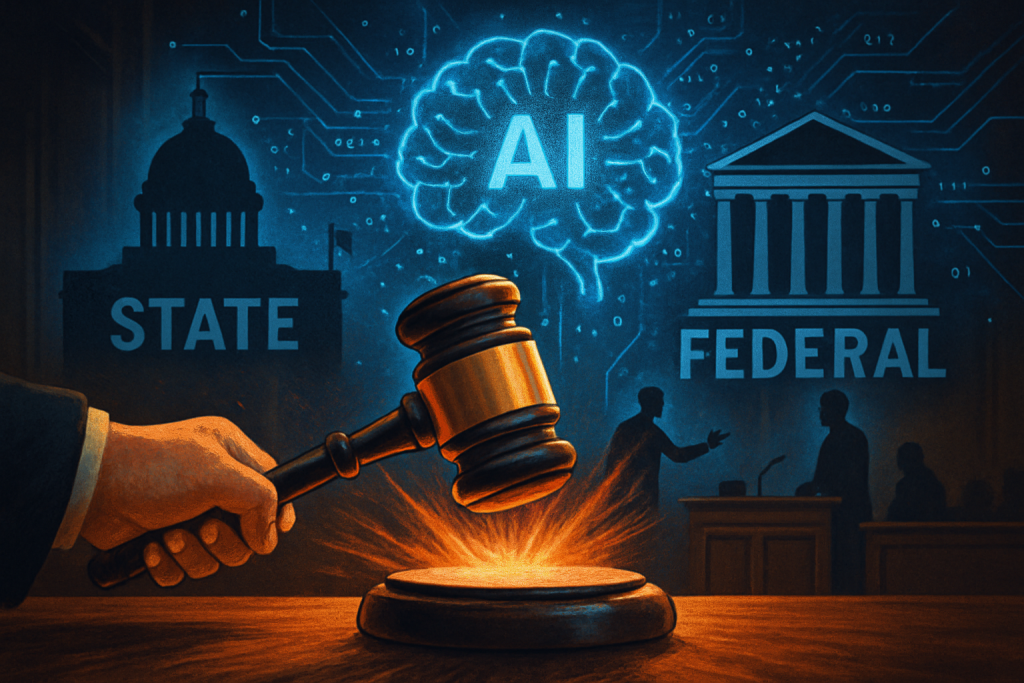The year is 2025. Flying cars remain stubbornly absent from our driveways, but AI? AI is everywhere. From composing symphonies that would make Beethoven weep (with joy, hopefully) to diagnosing diseases with an accuracy that makes your family doctor sweat nervously, artificial intelligence has become deeply woven into the fabric of our lives. But with great power, as Uncle Ben famously told Peter Parker, comes great responsibility. And, it seems, also great debate.
Dario Amodei, the CEO of Anthropic, one of the leading AI research companies, just threw a major wrench into the gears of Washington’s latest tech policy showdown. In a scorching op-ed published in The New York Times yesterday, Amodei took direct aim at a Republican-backed proposal nestled within President Trump’s new tax cut bill: a ten-year moratorium on state-level AI regulation. Think of it as a digital “hands off” sign slapped on individual states, preventing them from crafting their own rules for the AI wild west.
Amodei’s argument? Such a broad stroke is “too blunt” for the rapidly evolving AI landscape. He isn’t wrong. The world of AI is changing faster than you can say “recursive neural network.” What’s cutting-edge today is practically ancient history tomorrow. A decade is an eternity in tech years; imagine trying to apply dial-up modem regulations to a fiber optic network. That’s the level of disconnect we’re talking about.
But this isn’t just about technological obsolescence. It’s about power, control, and the future of innovation itself.
The heart of the matter is the tension between federal oversight and state-level autonomy. On one side, you have the argument for a unified national policy. Imagine a patchwork of state laws, each with its own unique requirements and restrictions. It’s a compliance nightmare for companies operating across state lines, potentially stifling innovation and creating a regulatory maze that only the most well-funded players can navigate. Proponents of federal control also emphasize national security concerns, arguing that AI’s potential impact on defense and intelligence requires a coordinated, top-down approach.
On the other side, you have the champions of state-level regulation. They argue that states are closer to the ground, more attuned to local needs and concerns. They see the federal government as slow-moving and potentially captured by powerful corporate interests. Think of California’s pioneering role in environmental regulations; many states have historically led the way on issues where the federal government has lagged behind. These advocates believe that state-level experimentation is crucial for finding the right balance between fostering innovation and mitigating risks.
Amodei falls squarely in the latter camp, albeit with a nuanced perspective. He’s not advocating for a complete free-for-all. Instead, he’s calling for a federal transparency standard. He wants AI developers to be required to disclose their testing methods and risk mitigation strategies, particularly when it comes to national security. In other words, “show your work,” AI companies. Let’s see what’s under the hood, and let’s make sure these powerful models are safe before they’re unleashed on the world.
He even points out that Anthropic, along with competitors like OpenAI and Google DeepMind, already adhere to such disclosure practices. It’s a subtle but powerful move, positioning Anthropic as a responsible player in the AI ecosystem, a company that’s not afraid of scrutiny. But Amodei also acknowledges that voluntary compliance might not be enough in the long run. As AI models become more sophisticated and corporate motivations become, shall we say, more complex, legislative measures might be necessary to ensure continued transparency.
The political backdrop to all of this is, of course, a swirling vortex of competing interests and ideological divides. President Trump’s tax cut bill is already a lightning rod for controversy, and the inclusion of the AI moratorium adds another layer of complexity. It’s a classic example of a policy rider, a provision attached to a bill that has little to do with the bill’s main purpose. These riders are often used to push through controversial measures that would struggle to pass on their own.
And who’s opposing this moratorium? A bipartisan group of attorneys general, the top law enforcement officials from various states. They’ve already been actively regulating high-risk uses of AI, and they’re not about to cede that authority to the federal government without a fight. This sets the stage for a potentially epic legal battle, one that could reshape the balance of power between Washington and the states.
Beyond the political maneuvering, there are deeper ethical and philosophical questions at play. What does it mean to regulate a technology that is constantly evolving? How do we balance the potential benefits of AI with the potential risks? Who gets to decide what those risks are, and how they should be mitigated? These are not easy questions, and there are no easy answers.
The financial implications are equally significant. A ten-year moratorium on state-level AI regulation could have a chilling effect on investment and innovation. Companies might be hesitant to invest in states where the regulatory landscape is uncertain, potentially leading to a concentration of AI development in a few select areas. This could exacerbate existing inequalities and create new winners and losers in the AI economy.
Ultimately, the debate over AI regulation is a reflection of our broader anxieties about the future. We’re grappling with a technology that has the potential to transform our world in profound ways, and we’re struggling to find the right way to harness its power while mitigating its risks. It’s a challenge that will require careful consideration, open dialogue, and a willingness to adapt as the AI landscape continues to evolve. One thing is clear: the future of AI is not just about algorithms and data; it’s about the choices we make today.
Discover more from Just Buzz
Subscribe to get the latest posts sent to your email.


